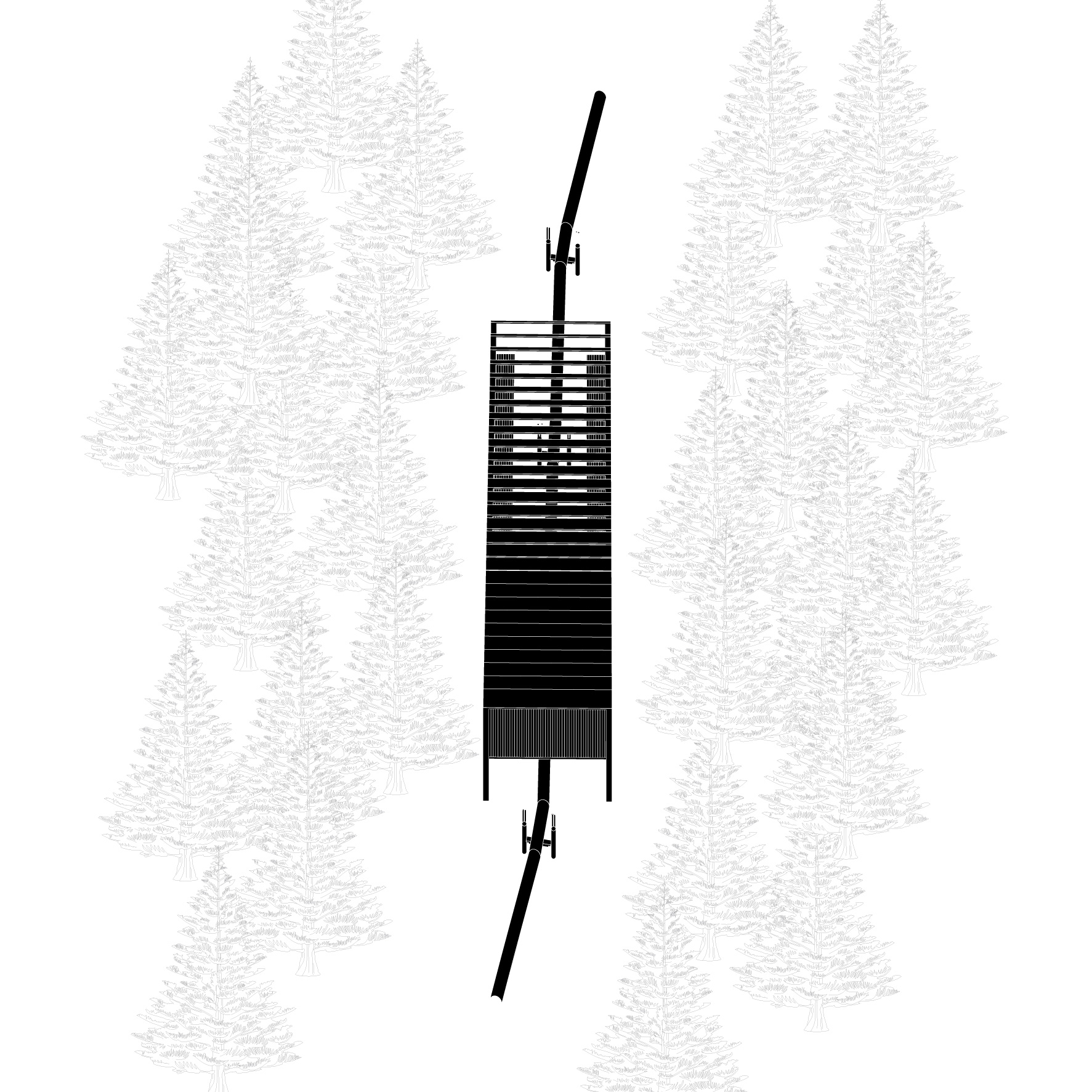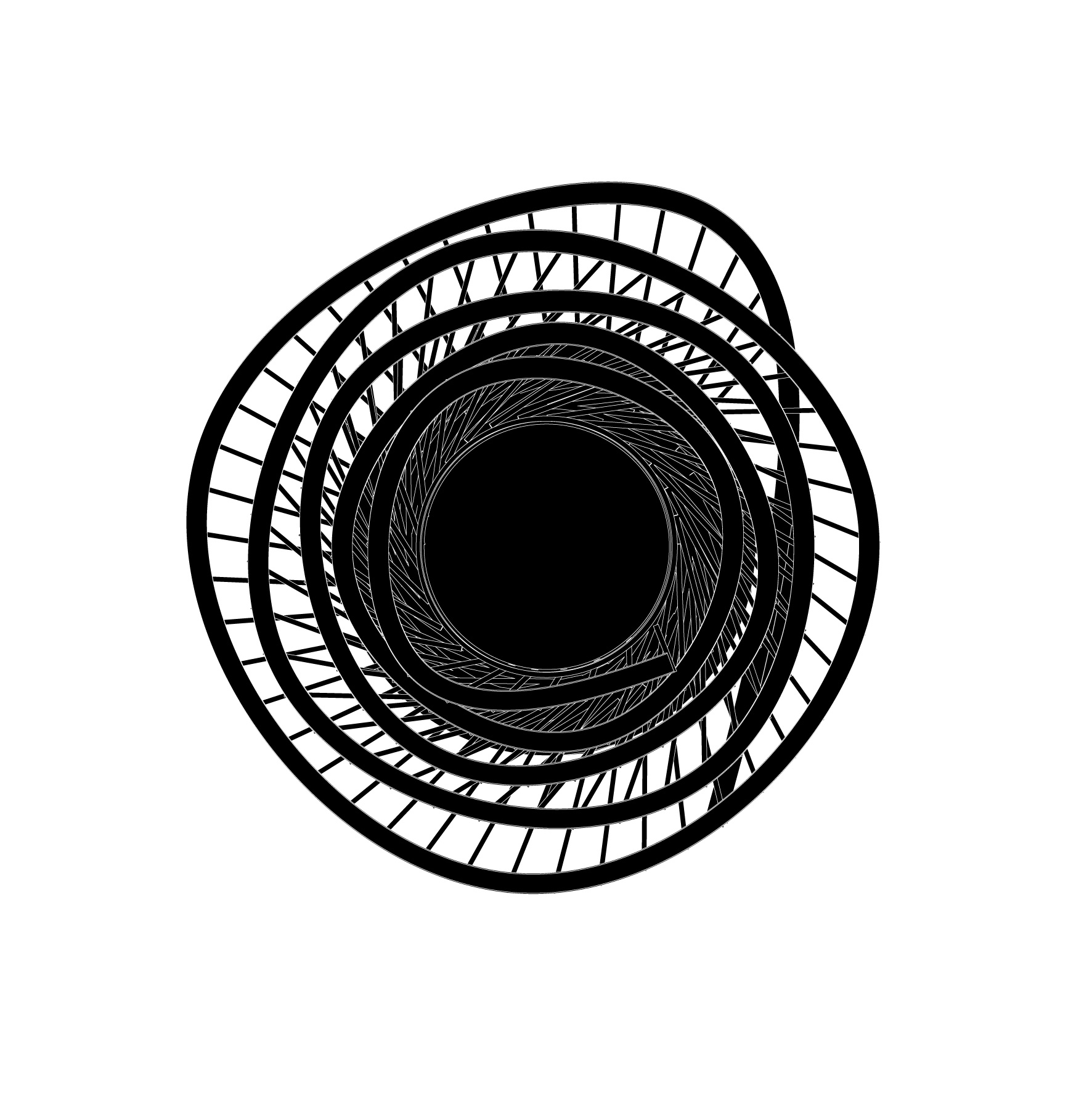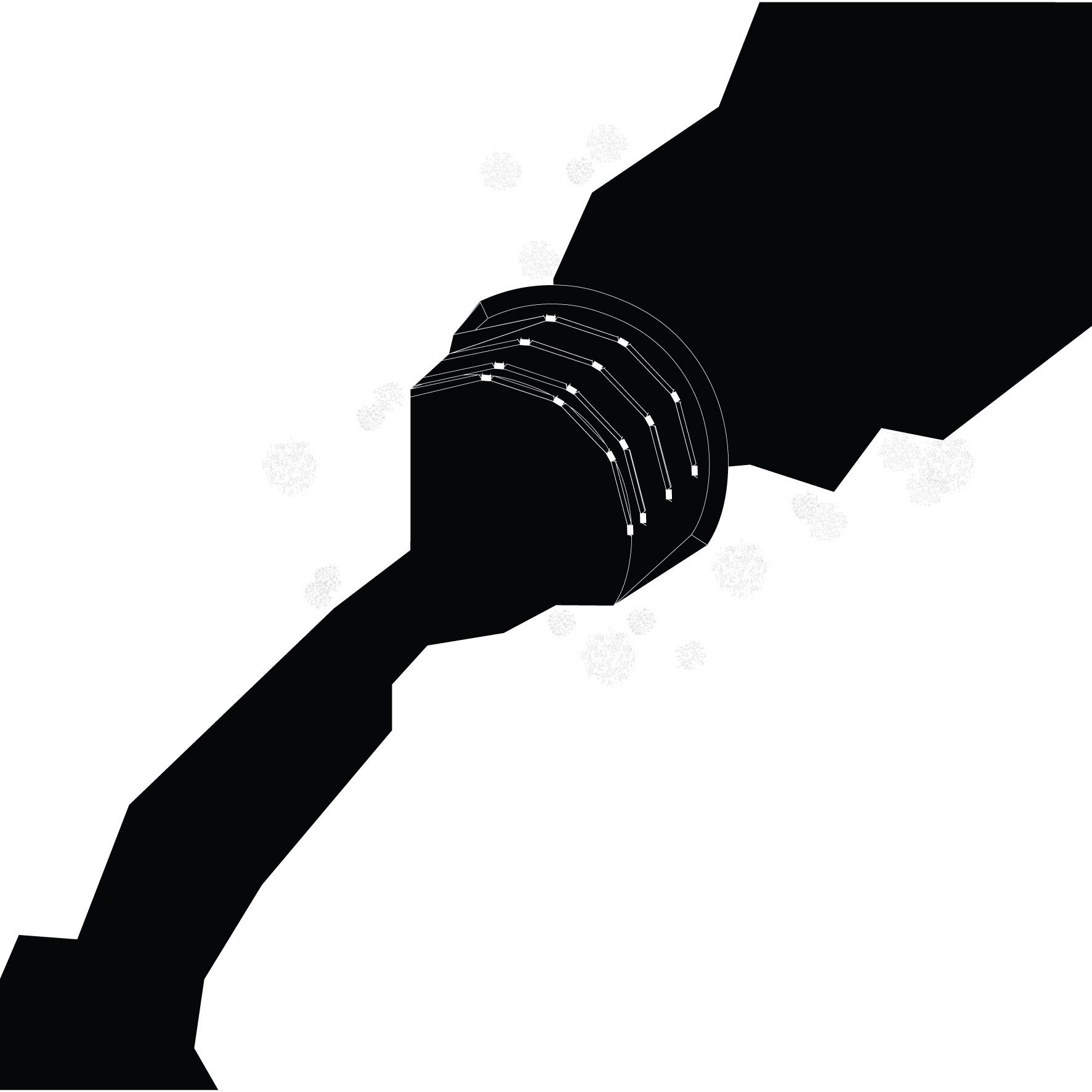xs/xxl
inhabiting the relics of the anthropocene
with Romain Curnier
Teaching - Computational Workshop L2
Organized by Ahmed Abouelkheir and Thierry Ciblac
Assistant monitor : Samir Boukhalifa
ENSAPM 2020
Teaching - Computational Workshop L2
Organized by Ahmed Abouelkheir and Thierry Ciblac
Assistant monitor : Samir Boukhalifa
ENSAPM 2020
As part of the mandatory computational workshop for second-year students at ENSAPM, the "XS/XXL - Inhabiting the Relics of the Anthropocene" session aims to introduce them to 2D, 3D and parametric design. It serves both as an initiation to modeling and design softwares (Rhino/Grasshopper, Adobe Suite), and as a first opportunity to manipulate representational tools, techniques and their underlying logics.
As a nod to the architecture classic S, M, L, XL1, the session seeks to confront two extreme scales of construction by associating a standard element of architecture to a landscape-scale infrastructure. The XS scale focuses on details and components at the core of architectural practice and design techniques.2 From the door knob to the stair, their scale define how bodies interact with their surroundings and ultimately, characterize the very experience of a given space, from its symbolic perception to its physical apprehension. At the other end of the spectrum, the XXL scale encompasses human-made infrastructures that were built to accomodate our modern way of life. Dividing territories and decorating the lands they inhabit, their scale and technical complexity almost turn them as non-places - unwelcoming spaces devoid of any human activity.3,4 And yet, they are the markers of a new era, and their bodies will mark landscapes for decades to come.5,6 The XS/XXL workshop proposes the students to explore ways to domesticate, to tame these gigantic relics with a playful, formal approach.
After a quick introduction to modeling and representation tools, each group of students is invited to develop a personal project in two phases. In the first phase, they are invited to pick and model an existing remarkable infrastructure among a selection of different contexts and typologies. As a first hands-on modeling experience, it also is the opportunity to understand its historical and geographical context, learn its specificities and identify the possible sites of intervention. The second phase invites the students to pick a traditional element of architecture, and to create a parametric version of it. Starting with the most simple abstraction, they progressively add complexity, playing with parameters such as size, shape, repetition or the reinterpretation of its components to arrive at a variable object that can be used to create interesting spatialities. Finally, they are invited to imagine an in-situ installation, a monumental intervention at the scale of the chosen infrastructure, using the parametric element they developed, with an attention to details and constructing possibilites. After having explored different variations, each group gets to fine-tune one version of the monumental intervention in order to extract various represention documents such plan drawings, sections, or axonometric views.
1. Koolhaas, Rem, Bruce Mau and OMA. S, M, L , XL. New York : Monacelli Press, 1998.
2. Koolhaas, Rem & OMA. Elements of Architecture. Köln : Taschen, 2018.
3. Shibata, Toshio. CONTACTS. Poursuite Editions, 2013.
4. Tabuchi, Eric. EDF - Electricité de France. Poursuite Editions, 2019.
5. Bratton, Benjamin. The Terraforming. Moscou : Strelka Press, 2019.
6. Baichwal, Jennifer et Nicholas de Pencier. Anthropocene - The Human Epoch. USA, 2020.
As a nod to the architecture classic S, M, L, XL1, the session seeks to confront two extreme scales of construction by associating a standard element of architecture to a landscape-scale infrastructure. The XS scale focuses on details and components at the core of architectural practice and design techniques.2 From the door knob to the stair, their scale define how bodies interact with their surroundings and ultimately, characterize the very experience of a given space, from its symbolic perception to its physical apprehension. At the other end of the spectrum, the XXL scale encompasses human-made infrastructures that were built to accomodate our modern way of life. Dividing territories and decorating the lands they inhabit, their scale and technical complexity almost turn them as non-places - unwelcoming spaces devoid of any human activity.3,4 And yet, they are the markers of a new era, and their bodies will mark landscapes for decades to come.5,6 The XS/XXL workshop proposes the students to explore ways to domesticate, to tame these gigantic relics with a playful, formal approach.
After a quick introduction to modeling and representation tools, each group of students is invited to develop a personal project in two phases. In the first phase, they are invited to pick and model an existing remarkable infrastructure among a selection of different contexts and typologies. As a first hands-on modeling experience, it also is the opportunity to understand its historical and geographical context, learn its specificities and identify the possible sites of intervention. The second phase invites the students to pick a traditional element of architecture, and to create a parametric version of it. Starting with the most simple abstraction, they progressively add complexity, playing with parameters such as size, shape, repetition or the reinterpretation of its components to arrive at a variable object that can be used to create interesting spatialities. Finally, they are invited to imagine an in-situ installation, a monumental intervention at the scale of the chosen infrastructure, using the parametric element they developed, with an attention to details and constructing possibilites. After having explored different variations, each group gets to fine-tune one version of the monumental intervention in order to extract various represention documents such plan drawings, sections, or axonometric views.
1. Koolhaas, Rem, Bruce Mau and OMA. S, M, L , XL. New York : Monacelli Press, 1998.
2. Koolhaas, Rem & OMA. Elements of Architecture. Köln : Taschen, 2018.
3. Shibata, Toshio. CONTACTS. Poursuite Editions, 2013.
4. Tabuchi, Eric. EDF - Electricité de France. Poursuite Editions, 2019.
5. Bratton, Benjamin. The Terraforming. Moscou : Strelka Press, 2019.
6. Baichwal, Jennifer et Nicholas de Pencier. Anthropocene - The Human Epoch. USA, 2020.














XS/XXL - Students plan views & sections
![]()
![]()
![]()
![]()
![]()
![]()
![]()
![]()
XS/XXL - Students renders








XS/XXL - Students renders